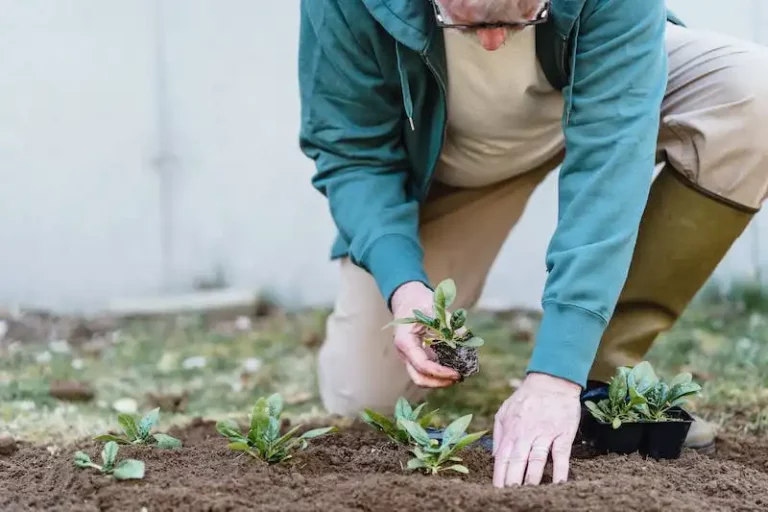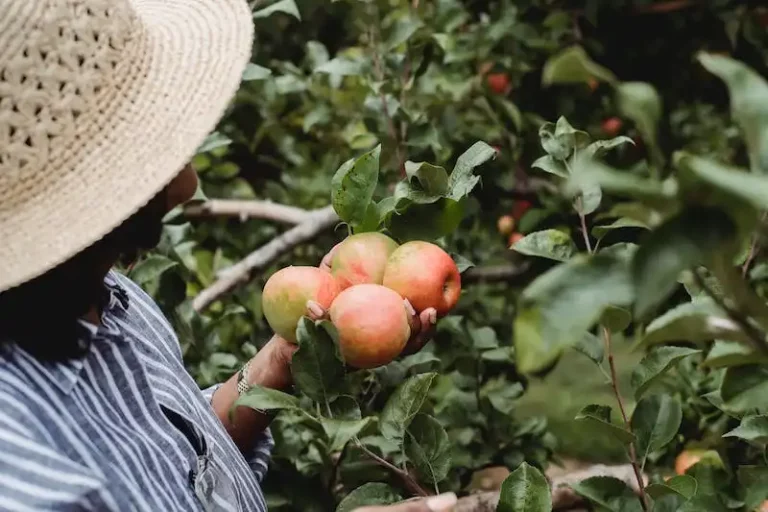Salvia clevelandii, commonly known as Cleveland Sage, is a popular and versatile plant that belongs to the Lamiaceae family. This perennial shrub is native to southern California and can be found in many gardens and landscapes. It is a favorite among gardeners and landscapers due to its beautiful flowering stems and its ability to thrive in a variety of conditions.
Cleveland Sage is known for its attractive foliage and long-lasting flowers. The stems of this plant are covered in soft, grayish-green leaves that have a strong aroma when crushed. The flowers are tubular and come in shades of lavender or blue, attracting bees and butterflies. The plant blooms from spring to early summer, but sometimes it can continue flowering throughout the year.
This species of sage is particularly tolerant of drought and can survive in poor, dry soils. It also prefers full sun but can tolerate some shade. In addition, it is cold and frost tolerant, making it suitable for gardens in areas with cool climates. It does well in USDA hardiness zones 7 to 9, although it can be grown as an annual in colder climates.
Cleveland Sage is easy to care for and does not require much water once established. It can withstand long periods of drought and is a good choice for water-wise landscaping. It is recommended to water the plant sparingly and only when the soil is dry to the touch. Overwatering can lead to root rot and other problems.
Salvia clevelandii Winifred Gilman Cleveland Sage
The Salvia clevelandii Winifred Gilman, also known as Cleveland Sage, is a tolerant and tough plant native to California. It belongs to the Salvia genus and is commonly referred to as the Cleveland Sage.
Description
The Cleveland Sage has sturdy stems and attractive grey-green foliage. The plant forms dense clumps and grows up to 5-8 feet in height. It produces unique lavender-blue flower heads that add a burst of color to any garden or landscape. The Cleveland Sage is a popular choice for gardeners due to its beauty and its ability to attract pollinators, such as bees and butterflies.
Growing Requirements
The Cleveland Sage is a hardy plant that has adapted to various environmental conditions. It can tolerate both heat and drought and prefers well-drained soils. This plant can sometimes withstand cold temperatures and light frost. However, it would benefit from some protection in colder regions.
Cleveland Sage can be grown from plugs or bought as potted plants from nurseries, department stores, or through mail order. It is a good idea to find a reputable source when purchasing this plant, as quality can vary. One reliable option is the Winifred Gilman Nursery, which specializes in salvias. They offer a wide variety of salvia species, including the Cleveland Sage.
Care and Maintenance
Once established, the Cleveland Sage is relatively low-maintenance. It needs occasional watering, especially during dry periods. However, overwatering should be avoided, as the plant prefers well-drained soils. The plant also benefits from regular pruning to encourage bushier growth and to remove dead or faded flowers.
The Cleveland Sage typically starts flowering in late spring and continues through summer and sometimes into early fall. It blooms abundantly, attracting pollinators and bringing a delightful fragrance to the garden. If you are looking for a tough and beautiful shrub that is easy to care for, the Cleveland Sage is an excellent choice.
Cleveland Sage
Cleveland Sage, also known as Salvia Clevelandii, is a tough and tolerant plant that can bring a splash of color to your garden. This species of sage is native to California and is known for its abundant flowering heads.
Plant Characteristics
Cleveland Sage has grey-green foliage and stems that can grow up to 4 feet tall. The plant produces beautiful lavender-blue flowers that bloom from spring to early summer.
Growing Requirements
This sage needs a good amount of water, especially during the hot summer months. However, it is also drought-tolerant once established. It prefers well-draining soil and can withstand temperatures down to 20°F.
Care and Maintenance
To care for Cleveland Sage, make sure to prune the plant in late winter or early spring to encourage new growth. Deadheading the flowering heads will also help promote more blooms throughout the season. If your sage gets too tall and starts to flop over, you can cut it back by about one-third to keep it more compact.
Where to Buy
Cleveland Sage can be found at many retail nurseries and mail-order plant suppliers. Some popular varieties include Salvia Clevelandii ‘Ain’t Got Rhythm’, Salvia Clevelandii ‘Allen Chickering’, and Salvia Clevelandii ‘Winifred Gilman’.
Overall, Cleveland Sage is a beautiful and tough plant that can add a pop of color to any garden. Whether you are a beginner or an experienced gardener, this sage is a great choice for its low maintenance needs and vibrant blooms.
Retail Nursery Open 7 Days 9 – 5 Mailorder Department Open M-F 8 – 4
If you are looking for a good nursery in Cleveland, Allen’s Nursery is the place to go. Our retail nursery is open seven days a week from 9 am to 5 pm, so you can always find time to visit us. We have a wide variety of plants, including the beautiful Cleveland Sage.
Cleveland Sage, also known as Salvia clevelandii or Winnifred Gilman, is a tough and drought-tolerant species. It has aromatic foliage and beautiful flowering stems that bring a flavor of the Clevelandii species. This sage gets its name from the city of Cleveland and is sometimes called Winnifred Sage.
This sage is known for its abundant flowering heads and tough foliage. It can withstand cold and frost, making it a great choice for Cleveland’s sometimes harsh weather. Whether you want to plant it in your garden or use it in landscaping, Cleveland Sage is a good option.
Mailorder Department
If you can’t visit our nursery in person, don’t worry! Our mailorder department is open Monday to Friday from 8 am to 4 pm. You can order your favorite Cleveland Sage, as well as other plants and shrubs, and have them delivered right to your doorstep.
Our experienced team will carefully pack and ship your plants, ensuring they arrive in good condition. So, even if you’re not in Cleveland, you can still enjoy the beauty and flavor of Cleveland Sage.
So, if you’re looking for Cleveland Sage or other plants, come visit our retail nursery open seven days a week from 9 am to 5 pm. Or, if you prefer, take advantage of our mailorder department open Monday to Friday from 8 am to 4 pm. Either way, we have everything you need for your gardening and landscaping needs.
This sage ain’t from Cleveland
The Cleveland Sage (Salvia clevelandii) is a popular species of flowering plants that you can find in Cleveland, Ohio. However, the sage with the scientific name “clevelandii” is not actually native to Cleveland. It is native to southern California.
This tough species of sage would be more at home in the dry, arid climate of southern California than in the frost-prone winters of Cleveland. Despite its origins, the Cleveland Sage can still be grown successfully in other regions, including Cleveland, if you take the necessary steps to provide the right conditions for it.
If you’re from Cleveland and want to bring a piece of southern California to your garden, the Cleveland Sage is a good choice. It has beautiful gray-green foliage that is highly aromatic, and it produces abundant lavender-blue flowers that bloom from spring to fall.
The Cleveland Sage is known for its tolerance to drought, and its stems are very drought-tolerant. It can tolerate hot and dry conditions, as well as cold temperatures down to 5 degrees Fahrenheit (-15 degrees Celsius). However, it is not frost-tolerant, so if you live in a region that experiences regular frost, you will need to protect the plant during the winter months.
If you want to grow the Cleveland Sage in your garden, you can find it at your local nursery or order it online from a reputable mail-order company. It is often sold as “Salvia clevelandii” or “Salvia winnifred gilman.” The cultivar “Winnifred Gilman” is a popular variety that is known for its hardiness and vigorous growth.
This sage sometimes goes by the name “Cleveland Sage,” but it ain’t from Cleveland. So if you want to enjoy the beauty and flavor of this wonderful plant, bring a piece of southern California to your garden.
Salvia clevelandii Cleveland Sage
Salvia clevelandii, also known as Cleveland Sage, is a tough and hardy perennial shrub native to California. It gets its name from the city of Cleveland, Ohio, where it was first documented in a botanical garden. This species of salvia is known for its beautiful flowering stems and aromatic foliage.
Plant Features
- Gilman and Winnifred Allen brought the clevelandii species of salvia to the Cleveland Botanical Department, where it flourished
- The plant is low maintenance and can withstand tough conditions
- It is frost tolerant and can survive in cold temperatures as low as 5 degrees Fahrenheit
- This salvia species needs well-drained soil and is drought tolerant once established
- It can grow up to 4 feet tall and spreads about 7 feet wide
- The foliage of clevelandii is aromatic and releases a pleasant scent when touched
How to Grow
If you want to grow Salvia clevelandii, then you will find that it is fairly easy to propagate. It can be grown from seeds or cuttings. The seeds take about 4 days to germinate in a greenhouse, and then the plug plants can be brought to the nursery for sale or distributed through mail order.
When planting Cleveland Sage, it is important to find a sunny location as it needs at least 8 hours of direct sunlight a day. It is tolerant of a wide range of soil types but prefers well-drained soil. Water the plant regularly, especially during the summer months, but avoid overwatering as the plant doesn’t like soggy conditions.
Flowering and Pruning
The flowering period of Salvia clevelandii is from late spring to early summer. The flowers are a beautiful lavender-blue color and attract pollinators like bees and butterflies. Deadheading the faded flowers will encourage continuous blooming throughout the season.
Pruning Cleveland Sage should be done in early spring to maintain its shape and encourage new growth. It is a good idea to cut the plant back by about one-third to promote a compact habit.
In colder climates, some winter protection may be needed, such as mulching around the base of the plant to help insulate the roots.
Overall, Salvia clevelandii is a versatile and beautiful plant that brings color, fragrance, and wildlife to any garden or landscape. It is a must-have for any sage enthusiast or garden lover.


